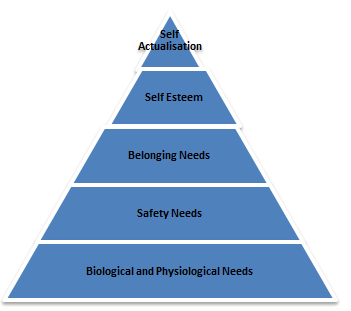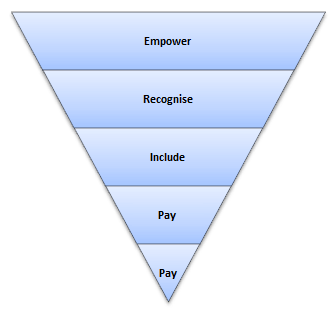Challenging Work as a Driver of Employee Engagement
April 3, 2025
 Challenging Work as a Driver of Employee Engagement
Challenging Work as a Driver of Employee Engagement
Introduction We often hear the term employee engagement being spoken about in various contexts. We are often told by management experts that engaged employees are a source of sustainable competitive advantage. During earlier periods of organizational theory and practice, it was common for the HR (Human Resources) function to take care of administrative aspects such…
 Characteristics of Engaged Workforce
Characteristics of Engaged Workforce
The level of employee engagement can be measured by the willingness and ability of employees to contribute to the success of their organisation. It is their discretionary effort which is an essential element for the good health and well being of a company. A highly engaged workforce shows the high level of engagement in their…
 Benefits of Employee Engagement
Benefits of Employee Engagement
History records how Alexander was able to march on and conquer hitherto unknown lands due his valour and his motivated troops. However, the same history also records, how dissent amongst his troops towards the latter part of his career, cut short his ambitions of supremacy in Asia. Alexander started hiring more outsiders, laying off his…
How to tap the potential of employees who are not actively engaged or are disengaged? Yes, the management studies conducted over last few years have revealed that only 11 percent of the total employee strength is actively engagement and feels a strong commitment towards their work and workplace. The rest 89 percent of the employees are either not actively engaged or disengaged. This means that the organisations are able to tap the potential of only 11 percent employees. Encouraging the rest of the workforce is still a big challenge for them.
Any organisations looking to bring the best out of their employees and engage them thoroughly in their job must prioritise its response towards the various needs of its employees. To align their response, they can utilise the Maslow’s Hierarchy model.
 Maslow’s Hierarchy |  Response of the Organisation |
Biological and Physiological Needs: These are basic human needs including food, water and shelter. Organisations can buy them lunch, offer gift cards and give time off for necessary day-to-day tasks. It not only makes their life easier but also gives them a chance to retain with the organisation.
Safety Needs: Safety needs include good shelter, protection, safety, security, law and order and stability. Once human beings have enough for food, water and shelter, they want to live a comfortable and safe life. Again the mantra of keeping them with the organisation is to pay. Pay for food and loan them an amount to build their own home or buy a vehicle. Organisations can also support their children education.
Belonging Needs: It is a basic human need that they always want to be associated with something. They want to belong and to be belonged. The managers can establish friendly relationships with their subordinates so that they feel that they are an important asset of the organisation and they add value to it. Including them in decision making process or any other sensitive issue springing up within the workplace is a good idea. Also involve them in improvement teams where they really can contribute something substantial.
Self Esteem: According to Maslow’s Hierarchy model, the fourth stage of one’s life is to attain a status in the society as well as in professional life. Besides this, a sense of achievement and recognition of their efforts play a vital role. Organisations which are successful in recognising the efforts of employees and reward them for their performance and contribution are able to retain their talent. Issuing newsletters recognising their contribution or giving a think you card or awarding them with a trophy can serve the purpose.
Self Actualisation: It is the last stage in the Maslow’s Hierarchy model that is about growth and fulfilment in personal and professional life. By this time, individuals are well settled in life and are able to contribute through their work experiences. It is the time when organisations can make them feel empowered by giving them leadership authority, autonomy to take decisions and training opportunities.
Employee engagement is a science as well as an art. It takes into account all tangible and intangible factors related to human life directly or indirectly.
Your email address will not be published. Required fields are marked *